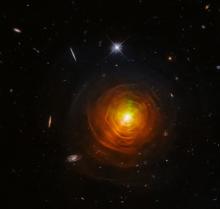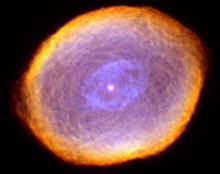Listen to today's episode of StarDate on the web the same day it airs in high-quality streaming audio without any extra ads or announcements. Choose a $8 one-month pass, or listen every day for a year for just $30.
You are here
Old Neighborhood
The star cluster Messier 13 is impressive. It contains perhaps a half-million stars, all packed into a ball that’s just 150 light-years across. And most of those stars reside near the center of the cluster. That would fill the skies of any planets that are there with brilliant displays — both day and night.
Yet most of the individual stars in the cluster aren’t all that impressive. Almost all of them are less massive than the Sun, which means they’re also fainter than the Sun.
There’s a direct relationship between a star’s mass, its brightness, and how quickly it evolves. Heavy stars burn through their nuclear fuel faster than lightweight stars, so they shine brighter but die faster.
A star as massive as the Sun will live a “normal” lifetime of about 10 billion years. M13 was born about 13 billion years ago, so any stars that were at least as heavy as the Sun have already expired. All that remain are less-massive stars, which live longer but shine less brightly.
Occasionally, a star in the cluster “steals” gas from a companion, increasing its mass and its brilliance. And when any star nears the end of its life, it gets bigger and brighter for a while. Otherwise, though, M13 is left with old, faint stars that aren’t much to shout about.
Even so, there are enough of those stars to make M13 visible to the unaided eye. Under dark skies, it looks like a faint, fuzzy star in Hercules, which is in view all night.
Script by Damond Benningfield





